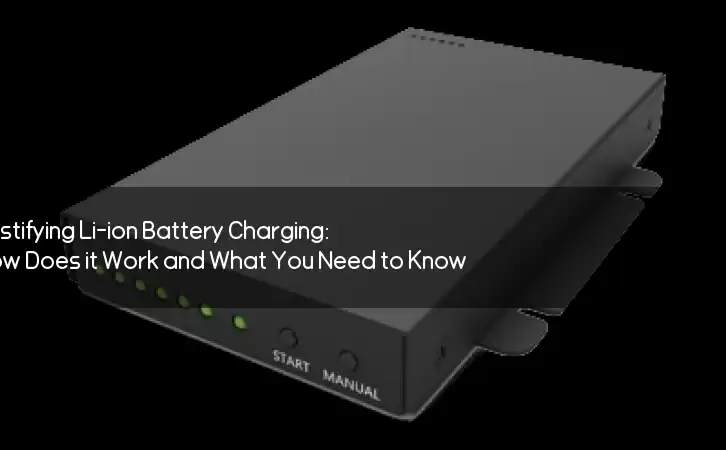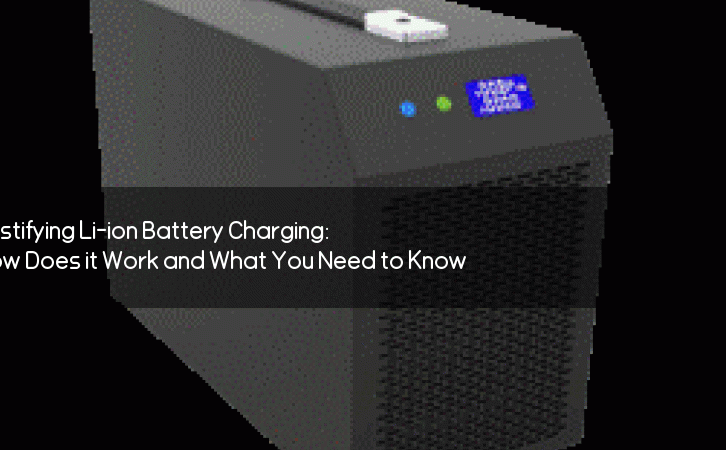Information Center
Demystifying Li-ion Battery Charging: How Does it Work and What You Need to Know
Published:2023-04-28 19:45:21 Author:Green WCND Views:87Li-ion batteries, also known as lithium ion batteries, are a type of rechargeable battery that is becoming increasingly popular in a variety of electronic devices. From smartphones and laptops to electric vehicles and even some household appliances, more and more products are relying on the power of Li-ion batteries to keep them running.

But what exactly is Li-ion battery charging, and how does it work?

Li-ion batteries are made up of several components, including an anode, a cathode, and an electrolyte. When the battery is charged, lithium ions move from the cathode to the anode, where they are stored as potential energy. When the battery is discharged, the ions flow back to the cathode, where they generate electricity.
Charging a Li-ion battery involves applying a voltage to the battery, which causes the lithium ions to move from the cathode back to the anode. This process is commonly referred to as “reversing” the flow of ions.
There are several different methods that can be used to charge Li-ion batteries, including constant current charging, constant voltage charging, and pulse charging. Each method has its own advantages and disadvantages, and the best option will depend on the specific application and battery type.
Constant current charging involves applying a constant current to the battery until it reaches a certain voltage. This method is typically used for initial charging, as it can help to prevent damage to the battery due to overcharging.
Constant voltage charging, on the other hand, involves applying a constant voltage to the battery until the charging current drops to a certain level. This method is often used for final charging, as it helps to ensure that the battery is fully charged without risking overcharging.
Pulse charging is another option, which involves applying short bursts of high current to the battery followed by periods of no current. This method can help to reduce the temperature of the battery during charging, which can be important for high-power applications.
One of the key considerations when charging Li-ion batteries is to avoid overcharging or undercharging, both of which can lead to decreased battery life or even damage to the battery. To prevent these problems, many Li-ion batteries include built-in circuitry and sensors that can monitor the battery’s state and prevent overcharging or undercharging.
Overall, Li-ion battery charging is a complex process that requires careful attention to detail in order to maximize battery life and performance. Whether you’re using a smartphone or an electric car, understanding the basics of Li-ion battery charging can help you to make the most of your devices and ensure that they last as long as possible.
Power Adapter Design and Customization Guide for Portable Electric KettlesI. Common Design Types for Portable Electric Kettle Power AdaptersPortable electric ke···
I. Common Design Types of Power Adapters External Independent Type (Most Common) Design: A standalone adapter (e.g., "black brick") connected to the p···
Handheld Vacuum Cleaner Power Adapter Selection GuideIntroductionHandheld vacuum cleaners have become a mainstream tool for household cleaning due to their port···
Drill Power Adapter Selection Guide.drill-container { font-family: Arial, sans-serif; line-height: 1.6; max-width: 800px; margin: 0 auto; padding: 20px; } .dril···





